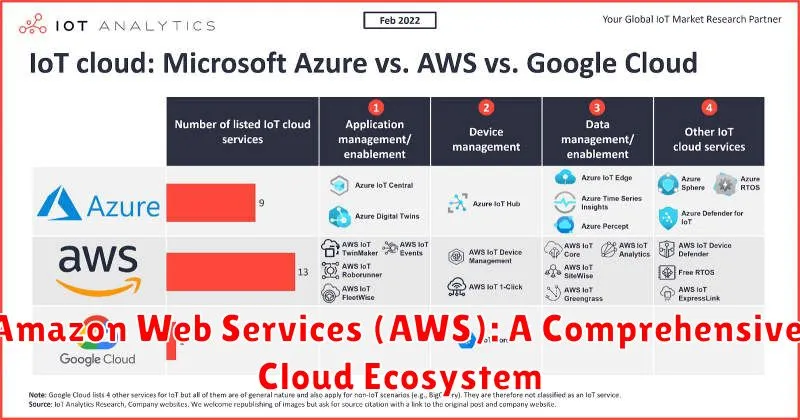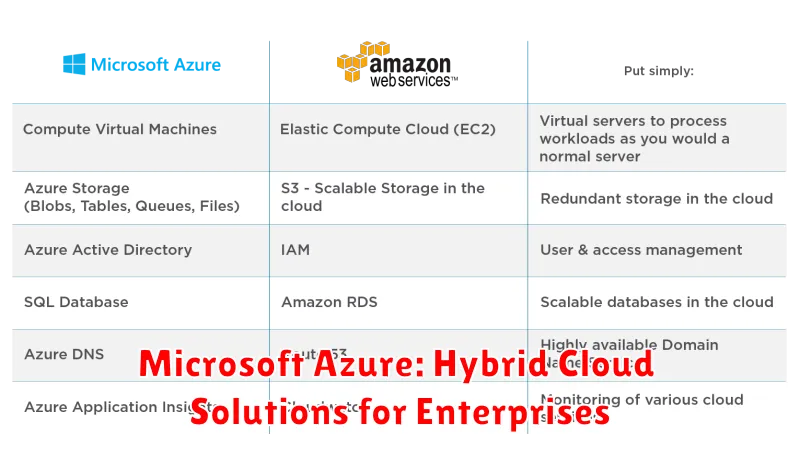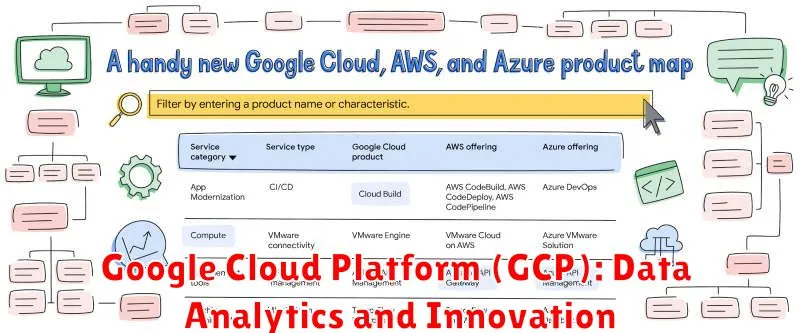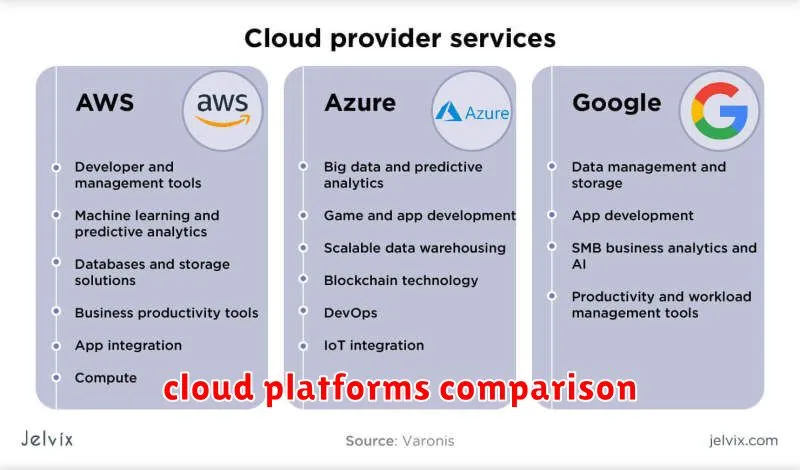In today’s digital age, businesses of all sizes are increasingly turning to the cloud to streamline operations, enhance efficiency, and gain a competitive edge. The cloud offers a vast array of computing services, from storage and networking to databases and software, all accessible over the internet. With numerous cloud providers and platforms available, navigating this complex landscape can be daunting. This comprehensive guide aims to provide you with a thorough understanding of cloud computing platforms, helping you make informed decisions about adopting and leveraging cloud technology for your business needs.
From Infrastructure-as-a-Service (IaaS) to Software-as-a-Service (SaaS) and Platform-as-a-Service (PaaS), we’ll explore the different types of cloud computing models, their benefits and drawbacks, and popular providers like Amazon Web Services (AWS), Microsoft Azure, and Google Cloud Platform (GCP). We’ll also delve into key considerations for cloud adoption, including security, cost optimization, and data migration. Whether you’re a seasoned IT professional or just beginning your cloud journey, this guide will equip you with the knowledge and insights needed to navigate the cloud effectively and harness its transformative power for your business.
What is Cloud Computing?
In essence, cloud computing is a model of delivering computing services—including servers, storage, databases, networking, software, analytics, and intelligence—over the internet (“the cloud”). Instead of owning and maintaining physical data centers and servers, users access these resources on demand from a cloud provider, paying only for what they use.
Think of it as renting computing power rather than owning it. You can scale your resources up or down as needed, without worrying about managing complex infrastructure. This flexibility and scalability are some of the key advantages of cloud computing.
Here are a few key aspects of cloud computing:
- On-demand self-service: Users can access cloud resources on their own, without requiring human interaction from the provider.
- Broad network access: Cloud services are accessible via various devices, anytime, anywhere.
- Resource pooling: Cloud providers pool resources to serve multiple customers, offering high efficiency and cost-effectiveness.
- Rapid elasticity: Cloud services can be scaled up or down quickly to meet changing demand.
- Measured service: Users are billed only for the resources they consume, providing greater transparency and control.
Types of Cloud Computing Models: IaaS, PaaS, and SaaS
The cloud computing landscape is vast and diverse, with numerous services and providers offering a wide range of solutions. To navigate this landscape effectively, it’s crucial to understand the different cloud computing models. These models represent varying levels of abstraction and control, each tailored to specific needs and use cases.
Three primary cloud computing models dominate the market: Infrastructure as a Service (IaaS), Platform as a Service (PaaS), and Software as a Service (SaaS).
Infrastructure as a Service (IaaS)
IaaS provides the most fundamental level of cloud computing, offering access to virtualized computing resources like servers, storage, networking, and operating systems. It’s akin to renting a physical data center, but without the overhead of managing and maintaining the underlying infrastructure. You have complete control over the operating systems and applications deployed, but you remain responsible for security, patching, and other administrative tasks.
Platform as a Service (PaaS)
PaaS takes the abstraction a step further by providing a ready-made development and deployment environment. This includes tools, frameworks, libraries, and runtime environments, allowing developers to focus on building and deploying applications without managing the underlying infrastructure. PaaS handles tasks such as operating system updates, security patches, and database administration.
Software as a Service (SaaS)
SaaS represents the highest level of abstraction, offering fully functional software applications accessible over the internet. Users interact with the software through a web browser or mobile app, eliminating the need for installation or maintenance. SaaS providers manage all aspects of the software, including updates, security, and backups, providing a fully managed solution.
Leading Cloud Providers: AWS, Azure, and GCP
The cloud computing landscape is dominated by three major players: Amazon Web Services (AWS), Microsoft Azure, and Google Cloud Platform (GCP). These providers offer a wide range of services, from infrastructure as a service (IaaS) to software as a service (SaaS), empowering businesses of all sizes to adopt cloud solutions.
AWS, the pioneer in the cloud computing market, holds the largest market share. Its vast portfolio includes compute, storage, database, networking, analytics, and machine learning services. Azure, backed by Microsoft’s robust enterprise solutions, provides a comprehensive suite of cloud services with a strong emphasis on hybrid cloud and security. GCP, leveraging Google’s expertise in data and AI, offers powerful tools for big data analytics, machine learning, and AI development.
Each provider caters to different needs and preferences. AWS excels in flexibility and breadth of services. Azure is known for its enterprise focus and integration with Microsoft products. GCP stands out with its AI and data analytics capabilities.
Ultimately, the best cloud provider for you depends on your specific requirements, budget, and technical expertise. Evaluating each provider based on these factors will help you make an informed decision and leverage the power of the cloud to your advantage.
Amazon Web Services (AWS): A Comprehensive Cloud Ecosystem

Amazon Web Services (AWS) is a leading cloud computing platform that provides a wide range of services to businesses of all sizes. It offers a comprehensive set of tools and services for building, deploying, and managing applications, databases, storage, and other infrastructure in the cloud. AWS’s extensive ecosystem and global infrastructure have made it a popular choice for businesses looking to leverage the benefits of cloud computing.
One of the key advantages of AWS is its extensive service portfolio. From compute and storage services like Amazon Elastic Compute Cloud (EC2) and Amazon Simple Storage Service (S3) to databases like Amazon Relational Database Service (RDS) and Amazon DynamoDB, AWS offers a solution for nearly every need. This breadth of services allows businesses to build and deploy complex applications with ease.
Another major benefit of AWS is its global infrastructure. AWS has data centers located in multiple regions around the world, providing low latency and high availability for applications and data. This global reach allows businesses to reach customers and users worldwide with minimal impact on performance.
AWS also prioritizes security and compliance. Its robust security measures and adherence to industry standards ensure the safety and integrity of data and applications. This makes AWS a reliable platform for businesses that handle sensitive information.
Beyond its core services, AWS offers a rich ecosystem of partner solutions and developer tools. This includes tools for building and deploying applications, managing infrastructure, and analyzing data. This ecosystem provides businesses with the flexibility and support they need to build and scale their cloud solutions.
Overall, AWS is a comprehensive cloud computing platform that offers a wide range of services, global infrastructure, robust security, and a rich ecosystem. It is a powerful tool for businesses looking to leverage the benefits of cloud computing and achieve their digital transformation goals.
Microsoft Azure: Hybrid Cloud Solutions for Enterprises

In today’s rapidly evolving technological landscape, businesses are increasingly adopting cloud computing to enhance agility, scalability, and cost-effectiveness. Among the leading cloud providers, Microsoft Azure stands out with its comprehensive suite of hybrid cloud solutions designed specifically for enterprises.
Azure’s hybrid cloud approach enables organizations to seamlessly integrate their on-premises infrastructure with the cloud, providing the best of both worlds. This flexibility allows businesses to leverage the benefits of the cloud while maintaining control over sensitive data and applications that require on-premises presence.
Here are some key features of Microsoft Azure’s hybrid cloud solutions for enterprises:
- Azure Stack: This on-premises extension of Azure brings the power of Azure services to your datacenter, allowing you to run applications in a consistent environment across both on-premises and cloud deployments.
- Azure Arc: This solution extends Azure management capabilities to your on-premises servers, virtual machines, and Kubernetes clusters, enabling unified management and governance across your entire IT landscape.
- Azure Site Recovery: This service facilitates disaster recovery and business continuity by enabling you to replicate your on-premises workloads to Azure, ensuring business operations continue uninterrupted in the event of a disruption.
- Azure Virtual Network (VNet) Peering: This feature allows you to connect your on-premises network to Azure VNet, enabling secure and high-bandwidth connectivity between your on-premises and cloud environments.
- Azure ExpressRoute: This service provides dedicated, private connections to Azure, offering high-performance and secure access for critical workloads.
By embracing Azure’s hybrid cloud solutions, enterprises gain numerous advantages:
- Increased Agility and Scalability: Easily scale resources up or down based on demand, allowing you to adapt quickly to changing business needs.
- Enhanced Security and Compliance: Leverage Azure’s robust security features and compliance certifications to protect sensitive data and meet regulatory requirements.
- Reduced Costs: Optimize resource utilization and reduce infrastructure expenses by leveraging Azure’s pay-as-you-go pricing model.
- Improved Innovation: Access a wide range of cloud-native services and tools to accelerate innovation and develop new solutions faster.
In conclusion, Microsoft Azure’s hybrid cloud solutions empower enterprises to navigate the cloud landscape with confidence. By combining the flexibility and scalability of the cloud with the control and security of on-premises environments, Azure provides a comprehensive platform for organizations of all sizes to drive digital transformation and achieve their business goals.
Google Cloud Platform (GCP): Data Analytics and Innovation

Google Cloud Platform (GCP) is a comprehensive suite of cloud computing services that empowers businesses to leverage data analytics and drive innovation. GCP’s data analytics tools provide powerful capabilities for collecting, storing, processing, and visualizing data, enabling organizations to extract valuable insights and make data-driven decisions.
One of the key strengths of GCP is its BigQuery, a fully managed data warehouse that allows for scalable, high-performance data analysis. BigQuery’s SQL-like query language and integration with other GCP services make it an ideal choice for complex data exploration and reporting.
GCP also offers a range of tools for data ingestion, transformation, and management, including Dataflow, Dataproc, and Cloud Data Fusion. These services facilitate the efficient flow of data from various sources into GCP’s data analytics platform, ensuring data consistency and quality.
Furthermore, GCP provides advanced machine learning capabilities with AI Platform, enabling businesses to build and deploy AI models for various applications. AI Platform simplifies the process of training, deploying, and monitoring machine learning models, facilitating data-driven insights and automation.
GCP’s data analytics and innovation capabilities empower businesses to unlock the potential of their data, drive business growth, and gain a competitive advantage. From analyzing customer behavior to predicting market trends, GCP’s tools and services provide a robust foundation for data-driven decision-making and innovation.
Choosing the Right Cloud Platform for Your Business Needs
The cloud computing landscape is vast and diverse, offering a plethora of options for businesses of all sizes. From infrastructure-as-a-service (IaaS) to software-as-a-service (SaaS), the choices can be overwhelming. Choosing the right cloud platform for your business needs is crucial for success, ensuring scalability, reliability, and cost-effectiveness.
First, assess your business requirements. Consider factors such as:
- Scalability: How will your business grow? Does the platform offer the ability to scale resources up or down as needed?
- Security: What are your security needs? Does the platform provide robust security features and compliance certifications?
- Cost: What is your budget? Different platforms have different pricing models, so it’s important to compare them.
- Integration: How well does the platform integrate with your existing systems and applications?
- Support: What level of support do you require? Does the platform offer 24/7 customer support?
Once you have a clear understanding of your requirements, you can start researching different cloud platforms. Some popular options include:
- Amazon Web Services (AWS): A comprehensive IaaS and PaaS offering with a wide range of services and a global infrastructure.
- Microsoft Azure: A cloud platform with a strong focus on enterprise solutions and hybrid cloud deployments.
- Google Cloud Platform (GCP): A fast-growing cloud platform with a focus on data analytics and machine learning.
- IBM Cloud: A platform offering a range of services, including IaaS, PaaS, and SaaS, with a focus on security and compliance.
- Oracle Cloud: A platform offering a range of services, including IaaS, PaaS, and SaaS, with a strong focus on database management.
It’s important to compare features, pricing, and customer reviews for each platform to find the best fit for your business. Consider conducting a pilot project or a proof of concept to test the platform before making a full commitment.
Ultimately, choosing the right cloud platform is an important decision that can have a significant impact on your business. By carefully considering your requirements and researching the available options, you can make an informed choice that sets your business up for success.
Key Considerations for Cloud Migration
Migrating to the cloud can be a significant undertaking, bringing a myriad of benefits but requiring careful planning and execution. Before embarking on this journey, it’s crucial to consider several key factors that will shape your cloud strategy and ensure a successful transition.
1. Business Needs and Goals: Start by defining your business objectives. What are you hoping to achieve with cloud migration? Are you seeking cost optimization, improved scalability, enhanced agility, or access to advanced technologies? Understanding your goals will guide your cloud choices.
2. Data and Application Assessment: Thoroughly assess your data and applications. Identify which applications are suitable for the cloud, their dependencies, and data migration requirements. This analysis will determine the complexity of the migration process.
3. Cloud Provider Selection: Choose a cloud provider that aligns with your needs. Consider factors like pricing models, security features, service offerings, and geographical presence. Some popular options include AWS, Azure, and Google Cloud Platform.
4. Security and Compliance: Cloud security is paramount. Ensure your chosen cloud provider meets your compliance requirements, including data protection regulations. Implement robust security measures to safeguard your data and applications.
5. Cost Optimization: Cloud computing can offer cost savings, but careful planning is essential. Consider different pricing models, usage patterns, and optimization strategies to maximize cost efficiency.
6. Skillset and Training: Cloud migration requires specialized skills. Ensure your team has the necessary expertise or consider training programs to bridge the gap. Partnering with cloud consultants can also provide valuable support.
7. Monitoring and Management: Establish monitoring and management tools to ensure the performance, security, and availability of your cloud infrastructure. Continuous monitoring is crucial for identifying issues and optimizing operations.
8. Backup and Disaster Recovery: Develop a comprehensive backup and disaster recovery strategy for your cloud environment. This will minimize downtime and data loss in case of unexpected events.
By carefully considering these key considerations, you can navigate the complexities of cloud migration and reap its numerous benefits. Remember, a well-defined plan, thorough assessment, and ongoing monitoring are essential for a successful and sustainable transition to the cloud.
Security and Compliance in the Cloud
As businesses increasingly embrace the cloud, concerns around security and compliance naturally arise. Cloud security encompasses protecting data, applications, and infrastructure from unauthorized access, use, disclosure, disruption, modification, or destruction. Compliance ensures that cloud deployments adhere to relevant industry regulations and legal frameworks.
Shared Responsibility Model: Cloud providers take responsibility for securing the underlying infrastructure, while users are accountable for securing their data and applications running on the cloud.
Key Security Considerations:
- Data Encryption: Encrypting data both at rest and in transit is crucial to prevent unauthorized access.
- Access Control: Implementing robust access control mechanisms ensures that only authorized personnel can access sensitive information.
- Vulnerability Management: Regularly scanning for and patching vulnerabilities helps prevent attackers from exploiting weaknesses.
- Security Monitoring: Continuous monitoring of network traffic, user activities, and system logs enables early detection of suspicious behavior.
Compliance Standards:
- GDPR (General Data Protection Regulation): Focuses on protecting personal data of individuals within the European Union.
- HIPAA (Health Insurance Portability and Accountability Act): Regulates the use and disclosure of protected health information in the United States.
- PCI DSS (Payment Card Industry Data Security Standard): Ensures secure handling of credit card data.
Best Practices for Cloud Security and Compliance:
- Choose cloud providers with strong security certifications and track records.
- Implement a comprehensive security strategy tailored to your specific needs.
- Regularly review and update security controls.
- Train employees on best practices for cloud security and compliance.
By diligently addressing security and compliance concerns, organizations can reap the benefits of cloud computing while mitigating risks and ensuring data protection.
The Future of Cloud Computing: Trends and Predictions
The cloud computing landscape is constantly evolving, driven by innovation and the increasing demand for scalable, flexible, and cost-effective IT solutions. As we look toward the future, several key trends are shaping the evolution of cloud computing.
Hybrid Cloud Adoption: Expect to see a continued rise in hybrid cloud deployments, combining the benefits of public and private clouds. This approach offers organizations greater control over data sovereignty, compliance requirements, and the ability to leverage the best of both worlds.
Edge Computing: The emergence of edge computing will further decentralize cloud infrastructure, bringing processing and data storage closer to users. This will enable faster response times, lower latency, and improved performance for applications like IoT, AR/VR, and real-time analytics.
Serverless Computing: Serverless computing will continue to gain traction as businesses seek to reduce operational overhead and focus on application development. By abstracting away the complexities of infrastructure management, serverless platforms empower developers to build and deploy applications with ease.
Artificial Intelligence (AI) and Machine Learning (ML) in the Cloud: Cloud providers are actively integrating AI and ML capabilities into their platforms. This enables businesses to leverage these technologies for tasks such as predictive analytics, automation, and personalized experiences.
Enhanced Security: Security remains paramount in cloud computing. Expect advancements in security features, such as zero-trust security models, advanced threat detection, and robust data encryption, to further enhance the protection of sensitive information.
Sustainability: As environmental concerns grow, cloud providers are focusing on sustainability initiatives, such as using renewable energy sources and optimizing energy efficiency in their data centers.
The future of cloud computing is exciting and filled with possibilities. By embracing these trends, organizations can unlock new opportunities for innovation, growth, and competitive advantage.
